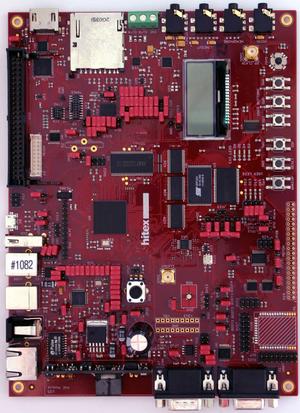Tracing on NXP LPC4350
Contents
This article describes how to get started with trace on the NXP LPC4350 series. This article assumes that there is already a basic knowledge about trace in general (what is trace, what different implementations of trace are there, etc.). If this is not the case, we recommend to read Trace chapter in the J-Link User Manual (UM08001). The NXP LPC4350 series implements tracing via pins or via on-chip trace buffer (ETB), so a J-Trace as well as the ETB can be used for tracing.
Minimum requirements
In order to use trace on the NXP LPC4350 series devices, the following minimum requirements have to be met:
- J-Link software version V6.32b or later
- Ozone V2.56l or later (if streaming trace and / or the sample project from below shall be used)
- J-Trace PRO for Cortex-M HW version V1.0 or later
To rebuild the project our IDE Embedded Studio can be used. The recommended version to rebuild the projects is V6.30. But the examples are all prebuild and work out-of-the box with Ozone, so rebuilding is not necessary.
Sample project
ETB
The following sample project is designed to be used with any J-Link or J-Trace debug probe and Ozone to demonstrate ETB trace. The project has been tested with the minimum requirements mentioned above on a Hitex LPC1850EVA-05 equipped with a LPC4350 MCU. The sample project comes with a pre-configured project file for Ozone that runs out-of-the box. In order to rebuild the sample project, SEGGER Embedded Studio can be used.
NXP_LPC4350_ETB_TraceExample.zip
Streaming trace
The following sample project is designed to be used with J-Trace PRO and Ozone to demonstrate streaming trace. The project has been tested with the minimum requirements mentioned above on a Hitex LPC1850EVA-05 equipped with a LPC4350 MCU. The sample project comes with a pre-configured project file for Ozone that runs out-of-the box. In order to rebuild the sample project, SEGGER Embedded Studio can be used. The recommended version to rebuild the projects is ES V6.30. But the examples are all pre-build and work out-of-the box with Ozone, so rebuilding is not necessary.
Note: The NXP LPC4350 MCU does not support traceclocks higher than 60 MHz due to hardware limits. The CPU clock can be set to 204 MHz, but then a functioning trace setup is not guaranteed.
Note: The example is shipped with a compiled .JLinkScriptfile, should you need the original source, please get in touch with SEGGER directly via our support system: https://www.segger.com/ticket/.
To create your own .JLinkScriptfile you can use the following guide as reference: How_to_configure_JLinkScript_files_to_enable_tracing
Specifics/Limitations
The LPC435x Productfamily has additional pins that can be used for tracing. Usually only 5 Pins are mapped to have the trace functionality. In this case however multiple pinout configurations are possible over different ports even. Should you be using our trace example make sure your physical tracepin connections are equal to the ones on the Hitex LPC1850EVA-05. If not adjust the pin initialization accordingly.
